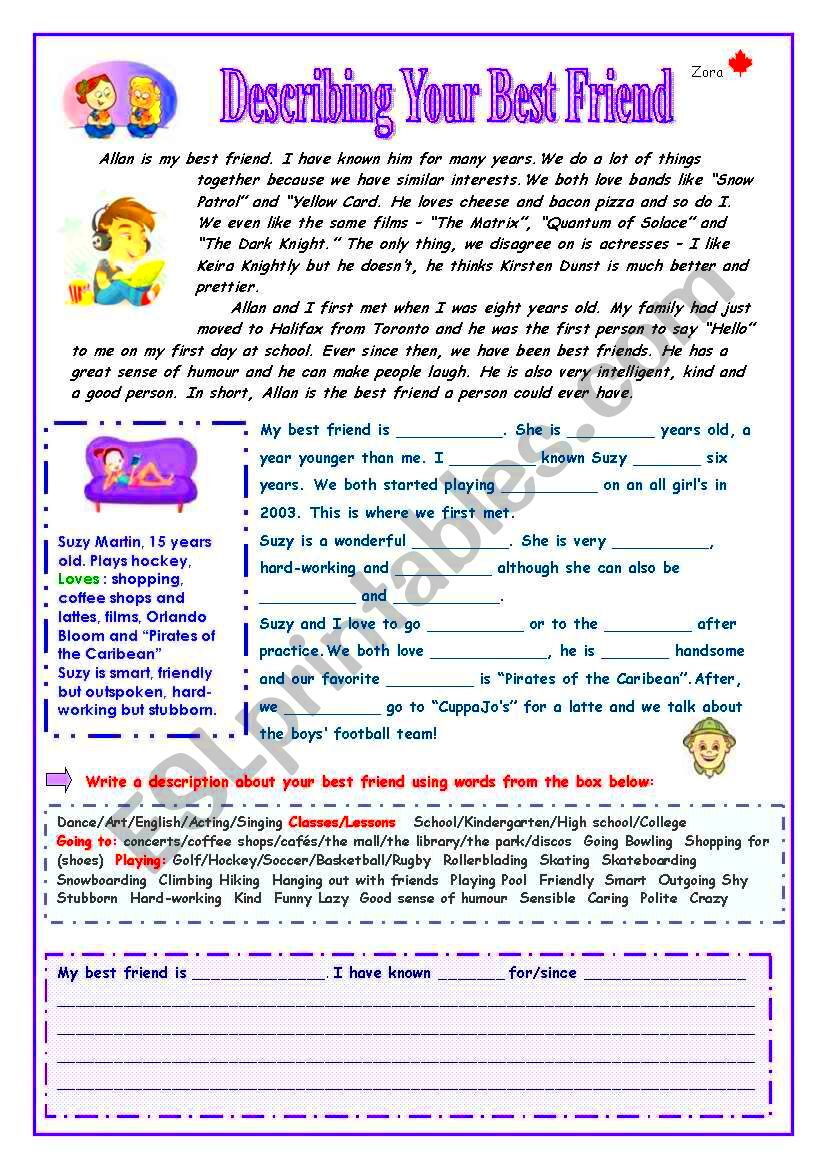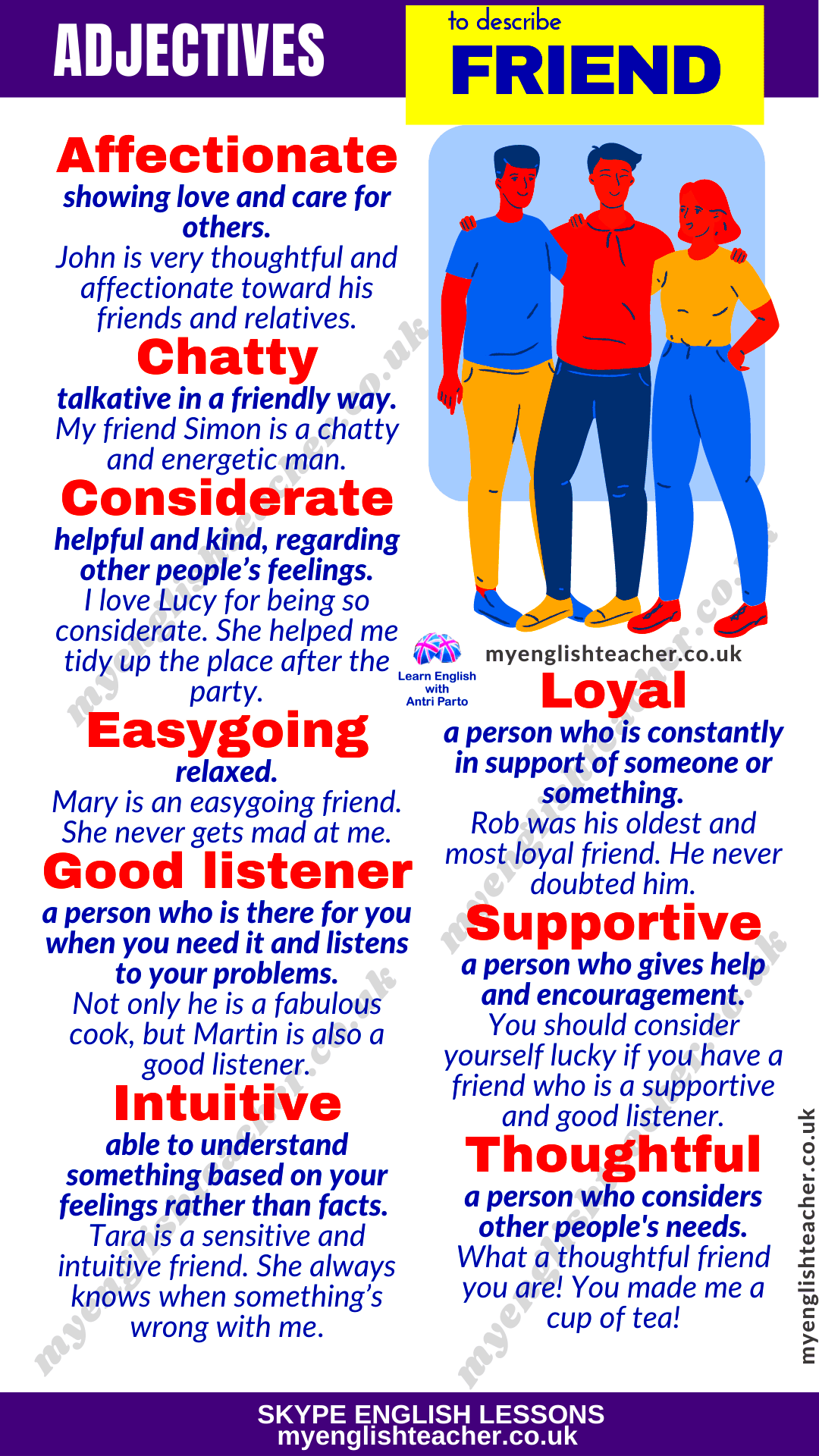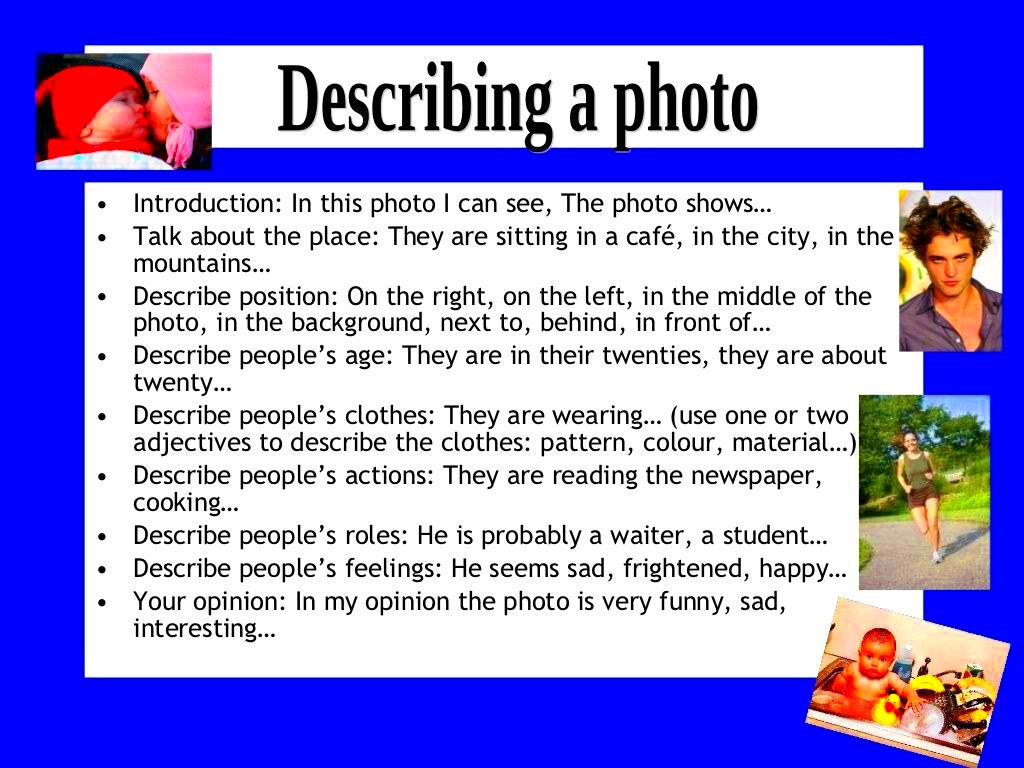Have you ever tried to describe a picture to a friend and struggled to find the right words? Describing an image might seem easy at first, but it can be tricky to convey all the details clearly. Whether it's a photo you took or an image you found online, giving a detailed and clear description can help your friend visualize it better. In this post, we'll show you simple ways to describe images effectively, so your friend can picture exactly what you're talking about, even if they can’t see the
Why It's Important to Describe Images Clearly

When you describe an image, your goal is to create a mental picture for the person listening to you. The clearer and more detailed your description, the easier it is for them to understand what the image looks like. If your description is vague or missing key details, they might not get the right idea of what you're talking about. Here's why it's important:
- Helps with communication: A clear description makes your message more effective, especially when the other person can't see the image.
- Improves understanding: By focusing on key details, you help your friend form a mental image of the scene or subject.
- Encourages connection: When your description is vivid, it allows your friend to feel more connected to the story you're telling about the image.
Being specific with your words, using descriptive language, and covering the essential details makes all the difference in helping someone see what you're describing. Clear communication not only makes conversations more engaging but also ensures you're understood.
Start with the Basic Details of the Image

The first step to describing an image is to give your friend the basic information. This is like setting the scene before diving into more specific details. Think of it as giving them an overview of what they're about to “see” in their mind. Here are some of the basic elements you can start with:
- Type of image: Is it a photograph, a drawing, or a digital artwork? Let your friend know so they have an idea of what medium they’re imagining.
- Subject: What’s the main subject of the image? Is it a person, animal, landscape, or a still life? Identifying the focus right away sets the tone for the description.
- Setting: Where does the image take place? Is it indoors, outdoors, at a beach, in a city, or in nature? Giving a general location helps add context.
- Overall size or composition: Is the image close-up, wide, or zoomed out? Describing the composition of the image helps your friend understand how much of the scene is captured.
By starting with these basics, you're giving your friend a solid foundation for understanding the image before diving into more complex details. Once the scene is set, you can move on to describing other aspects that add to the picture's richness.
Describe the Colors and Mood of the Image
Colors play a huge role in setting the mood and tone of an image. When describing an image to a friend, mentioning the colors helps them understand not just what the
Here are some tips on how to describe colors and mood:
- Be specific: Instead of just saying “blue,” describe the shade—“light blue,” “navy,” or “turquoise.” This adds depth to your description.
- Describe contrasts: Are there any contrasting colors that stand out? For instance, a bright red object against a green background can really draw attention and set a dynamic tone.
- Link colors to mood: Colors often suggest feelings. Describe how the colors make you feel. “The soft pastels in the image create a calm, serene mood,” or “The vibrant yellows and oranges give off a happy, energetic vibe.”
- Note lighting: Lighting can affect the mood of an image. Is the image lit warmly, like a sunset? Or does it have harsh, cold lighting, making it feel stark and dramatic?
By highlighting the colors and how they influence the mood, you give your friend a deeper connection to the image, not just visually, but emotionally as well.
Talk About the Setting and Background
The setting and background are important elements of any image. They provide context and can tell a story. Is the scene in a busy city or a quiet countryside? Is it indoors or outdoors? The background can sometimes be just as important as the main subject of the image, because it adds layers of information. Describing the setting helps your friend understand not just where the action is happening, but also what’s going on around the subject.
Here’s how you can talk about the setting and background:
- Location: Start by describing the overall location. Are they on a beach, in a forest, or in an urban environment? A clear sense of place helps the listener visualize the surroundings.
- Time of day: Mention if the image is taken during the day, evening, or night. The time of day affects lighting, shadows, and even the feel of the scene.
- Background details: Are there any objects or people in the background that add context to the image? For instance, a mountain in the distance, a crowd of people, or a busy street all contribute to the story.
- Weather or atmosphere: Is it sunny, cloudy, foggy, or raining? The weather conditions often affect how the setting is perceived and how the image feels overall.
By describing the setting and background, you give your friend a clearer picture of the environment surrounding the main subject. It helps them understand the scene more fully and adds depth to your description.
Focus on the Key Elements or Objects in the Image
Every image has key elements that stand out and grab attention. These could be people, objects, animals, or even specific details like a tree, a building, or a piece of furniture. When describing an image to a friend, focusing on these key elements helps direct their attention to what’s important. It allows them to visualize the image’s focal points clearly and understand what makes the image interesting.
Here’s how to effectively talk about the key elements or objects in the image:
- Identify the main subject: Is there a person, animal, or object that takes center stage? Start by identifying this, so your friend knows what to focus on.
- Describe details: Is there something unique about the key elements? For example, a person might be wearing a colorful outfit, or an object might have intricate details. Point these out to make the description more vivid.
- Size and scale: How big or small are the key elements in comparison to their surroundings? Are they in the foreground, or are they distant in the background?
- Actions or interactions: Is the key element in motion, or are there interactions happening? For example, is a person running, or are animals playing together? Describing the actions adds life to your description.
By focusing on the key elements and their details, you help your friend understand what makes the image stand out and why it's visually interesting. This creates a stronger mental image and makes your description more engaging.
Use Descriptive Language to Bring the Image to Life
Using descriptive language is a powerful way to make an image come alive in your listener’s mind. The more vivid and detailed your words, the easier it is for your friend to visualize exactly what you're describing. Instead of just stating facts, try to paint a picture with your words. For example, rather than saying “a tree,” you could say, “A tall oak tree with thick, gnarled branches reaching up to the sky, its leaves a vibrant green.” This type of description creates a much stronger mental image.
Here are some tips to help you use descriptive language effectively:
- Engage the senses: Use words that appeal to sight, sound, smell, taste, and touch. For example, “The smell of fresh rain filled the air” or “The golden sunlight glistened off the water.”
- Use comparisons: Metaphors and similes can add depth. “The clouds were like cotton candy, soft and pink against the blue sky” or “The sunset was as fiery as a blazing fire.”
- Show movement: If there’s any action in the image, describe it in motion. Instead of saying “A bird is flying,” you could say, “A bird flutters through the air, its wings flapping rapidly.”
- Highlight unique features: Focus on details that stand out. For example, “The woman’s red dress stood out against the neutral backdrop of the city streets, drawing attention wherever she went.”
By using descriptive language, you can transport your friend into the image and make them feel as if they are seeing it with their own eyes. This level of detail can turn a simple description into an engaging experience.
Conclude by Summarizing the Image Description
After you’ve described all the important details of an image, it’s helpful to conclude by summarizing the overall scene. This reinforces what you’ve just described and helps your friend put all the details together. Summarizing gives them a clear picture of the entire image without getting lost in too many specifics.
Here's how to effectively summarize your description:
- Recap the main subject: Start by briefly mentioning the central focus of the image. For example, “So, in this image, there’s a person standing on a mountain peak, looking out over the valley below.”
- Include key elements: Mention any standout features you've described, like colors, objects, or actions. “The vibrant sunset paints the sky in shades of orange and pink, while the person’s silhouette adds a dramatic touch to the scene.”
- Reiterate the mood or feeling: Close by mentioning the overall vibe or emotion the image evokes. “The image gives off a sense of peace and awe, as if the person is contemplating the vastness of the world around them.”
Concluding in this way helps your friend mentally stitch together the image from all the different pieces you’ve described. It ensures that they have a clear and cohesive image in their mind by the end of the description.
FAQ
Q: How can I describe an image without making it too complicated?
A: Focus on the key elements that stand out most and avoid overloading your description with too many small details. Start with the basics, like the main subject, and then gradually add more details as needed. Keep it simple, clear, and engaging.
Q: What if I don't know the exact names of things in the image?
A: Don’t worry! You can still describe things without needing the exact names. For example, instead of calling a specific type of tree, you can just describe it as "a tall tree with large green leaves" or something that fits the image. Focus on the visual qualities that matter most.
Q: How do I make my descriptions more vivid?
A: Use sensory language, comparisons, and detailed observations to make your description more engaging. Instead of saying “there’s a car,” try saying, “A sleek, shiny black car zooms down the empty road, its engine roaring.” This creates a much more dynamic image in your friend’s mind.
Q: Is it important to describe the background of an image?
A: Yes! The background can provide context and make the main subject stand out more. It helps set the scene and gives your listener a better understanding of the overall atmosphere of the image.
Conclusion
Describing an image to a friend might seem challenging at first, but with the right approach, it can be a fun and engaging experience. By focusing on the key elements, using descriptive language, and providing context through the setting and background, you can help your friend visualize the image as clearly as if they were seeing it themselves. The goal is to make your description vivid and detailed, so the listener can truly imagine the scene in their mind. Remember, the more you practice these techniques, the better you'll get at bringing images to life through words.

 admin
admin








